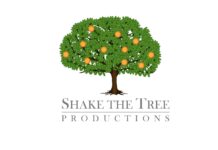Learn how to grow and monetize a podcast authentically—without clickbait, spammy sponsors, or burning out your audience.
Grow or Die: How to Market and Monetize Your Podcast Without Selling Out
There comes a point in every podcast’s life where the big questions hit:
-
How do I get more listeners?
-
How do I make money from this?
-
And how do I do both without annoying my audience or becoming a clickbait merchant?
Welcome to the scale stage — where good podcasts grow, bad ones vanish, and great ones build something sustainable.
This guide is about how to grow and monetize a podcast authentically — without compromising your integrity or creativity.
First: Growth Before Monetization
If you’re getting fewer than 500 downloads per episode, focus entirely on growth before you chase money. Why?
Because:
-
Advertisers want reach
-
Listeners support shows they believe in
-
Monetization built too early can hurt credibility
Growth is the soil. Monetization is the fruit. Don’t try to pick apples from a seedling.
Part 1: How to Grow Your Podcast (Strategically)
Podcast growth is a mix of content quality, discoverability, and audience advocacy.
1. Optimize for Search (Podcast SEO)
You don’t need to be an SEO nerd — just smart.
Tips:
-
Title episodes with questions or benefits (“How to Grow an Etsy Store in 90 Days”)
-
Add full show notes and transcripts
-
Use target keywords in your episode descriptions and blog posts
-
Embed episodes on your website (every episode is a new landing page)
This builds discoverability over time — especially in Google.
2. Leverage Social — But Smarter
Posting “New episode out now!” isn’t marketing. It’s noise.
Instead:
-
Share a story or takeaway from the episode
-
Create audiograms or short vertical clips (via Headliner, Descript, or Opus)
-
Tag guests, use relevant hashtags, and repurpose across platforms (Twitter/X, LinkedIn, Instagram, TikTok)
Pro move: Turn your podcast into native video content
(via Riverside or camera capture) and publish to YouTube. It’s the #2 search engine in the world.
3. Cross-Promotion > Ads
Paid podcast ads convert poorly (and are expensive). Instead:
-
Swap promos with similar-sized podcasts
-
Guest on aligned shows (or interview hosts)
-
Mention other podcasts in your episodes and ask them to return the favor
Podcast listeners trust podcasters — so use that trust network.
4. Build an Email List (Now, Not Later)
Email is your direct connection to fans — and future customers.
Offer:
-
Exclusive bonus episodes
-
Behind-the-scenes content
-
Guest Q&As
-
Downloadable toolkits
Use platforms like ConvertKit, Beehiiv, or Substack to collect and nurture subscribers.
Part 2: How to Monetize Authentically
Once you’ve built trust and an audience, you have several monetization paths. Choose one that fits your content and your ethics.
1. Sponsorships (The Classic Route)
Pros:
-
Scalable
-
Familiar to listeners
Cons:
-
Requires high download numbers (1,000+ per ep)
-
Often pays poorly unless you’re niche or established
Tips:
-
Create a Media Kit with your downloads, audience demographics, and sample ads
-
Pitch brands directly if you’re in a niche (e.g. software tools, coaches, apps)
Example:
1,000 downloads per episode = ~$25 CPM
3 sponsors per episode = ~$75 per episode (starter range)
2. Listener Support (Direct-to-Audience Revenue)
Platforms:
-
Patreon
-
Supercast
-
Apple Subscriptions
-
Buy Me a Coffee
Best for:
-
Loyalty-driven audiences
-
Bonus content models
-
Creators who want control over their income
Offer tiers like:
-
Bonus episodes
-
AMA sessions
-
Member shoutouts
-
Early access
3. Products and Services (High ROI)
This is where real money is made.
Options:
-
Online courses
-
Coaching or consulting
-
Merch
-
Ebooks or templates
-
Paid communities
You already have trust. Monetizing that value often works better than selling ad space.
Bonus: Build a funnel from podcast → email list → product launch.
4. Affiliate Marketing (Soft Monetization)
Mention products you actually use and earn a cut.
Best when:
-
It’s relevant to your content
-
You have a dedicated link or code
-
You’re transparent
Example:
“I record all my episodes on Riverside — and if you want to try it, use my link and get 15% off.”
It’s authentic, useful, and earns without selling out.
⚠️ Monetization Red Flags to Avoid
-
Promoting products you don’t believe in
-
Running 5-minute ad blocks in the first 60 seconds
-
Interrupting the flow with aggressive CTAs
-
Overcharging listeners for underdelivered perks
Your audience is smart. They can tell when you’re chasing cash over connection.
Track What Works — Then Double Down
Use tools like:
-
Spotify for Podcasters (episode performance, retention)
-
Chartable (promo attribution)
-
Supercast or Patreon analytics (subscriber insights)
-
Google Analytics + email platform data (for funnel visibility)
Growth and revenue aren’t one-size-fits-all. Test, measure, refine.
✅ TL;DR – How to Grow and Monetize a Podcast Authentically
-
Grow first — monetize later
-
Optimize for SEO, social sharing, and guest cross-promo
-
Build and nurture your email list
-
Choose monetization that fits your audience and values
-
Start with listener support or services, then scale to sponsors
-
Avoid spammy tactics that erode trust
-
Track results and evolve with your audience
Joe Wehinger (aka Joe Winger) has 25 years of entertainment experience and 10 years in business working with Golden Globe winning, Emmy Winning, Hall of Fame inductee entertainment legends and business titans around the world. In addition to being a Directors Guild member and a certified Executive Producer (specialist in investor agreements, tax incentive, private financing), he runs the global digital marketing agency United Digital for over 12 years helping projects around the world create life-changing profits and positive impact. Today he’s studying how AI will interrupt and evolve our future.



![Challenge Butter’s Quiet Luxury of Better Flavor at Home with Cubes and Decorative Snowflake [Interview with Maheen Khan] Challenge Butter blends California heritage, clean ingredients, and innovation to elevate everyday cooking](https://dailyovation.com/wp-content/uploads/2026/01/butter1-218x150.webp)













![From Medical Miracles to Movies: Indie Film, Bourbon, and Giving Back [Interview with Producer George Ellis] Dr. George Ellis shares how indie film, bourbon, and purpose collide](https://dailyovation.com/wp-content/uploads/2026/01/george-ellis-headshot-218x150.jpg)














